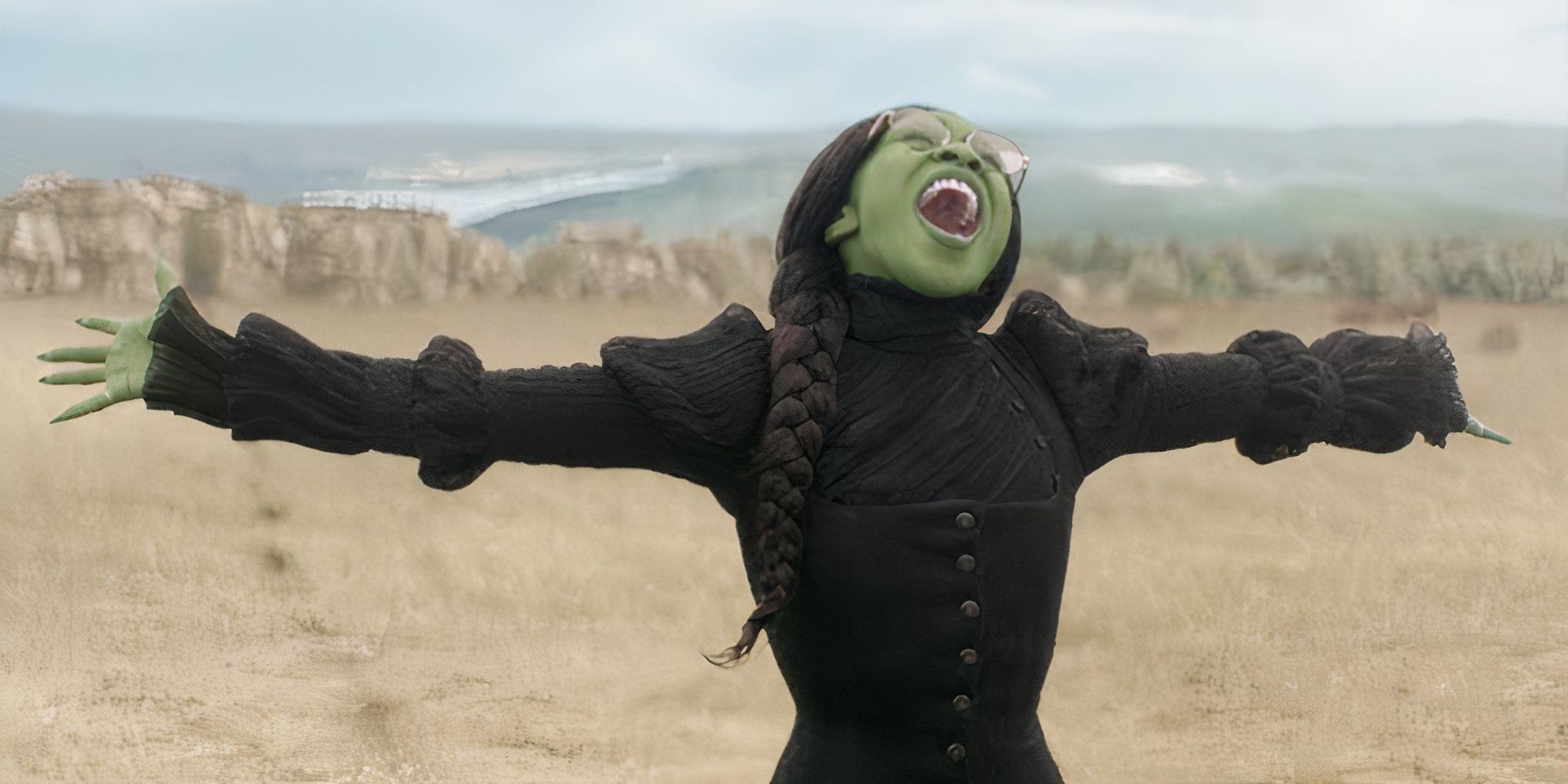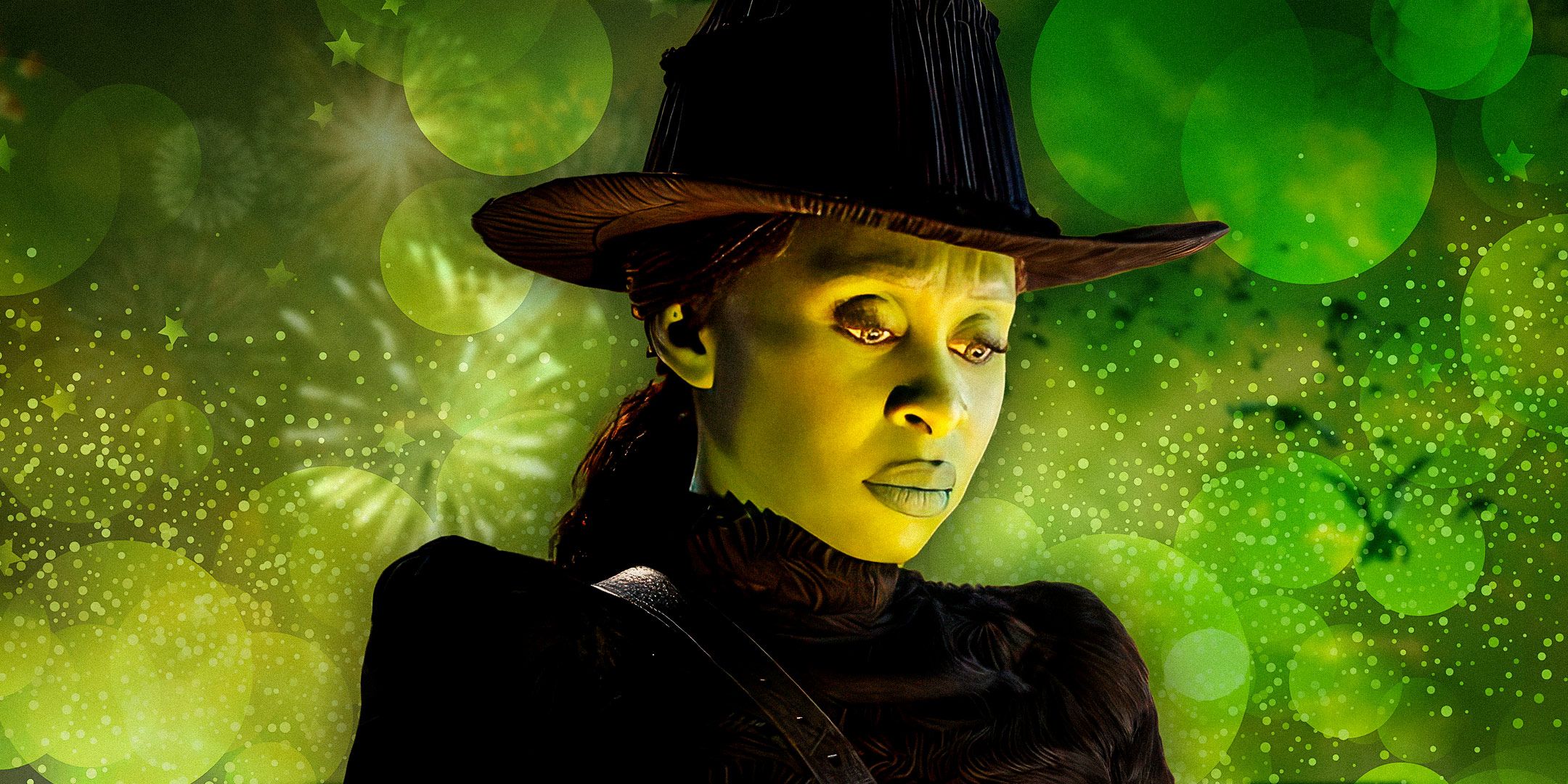
Wicked is a masterful movie musical adaptation that boasts its own soundtrack of breathtaking Broadway songs, but uniquely interacts with one of the most famous songs in cinematic history. Wicked follows Elphaba (Cynthia Erivo), the future Wicked Witch of the West, who is initially a very idealistic person, despite having been treated unkindly her whole life because of her green skin. She wants to be liked by people and do good in the world; in some ways, her optimism is rewarded by her friendship with Glinda (Ariana Grande-Butera), who is Elphaba’s first real friend and believes in her absolutely.
Elphaba’s worldview and her plans to fight injustice are drastically changed by the unjust fate of her favorite teacher, Dr. Dillamond (Peter Dinklage), and her finally meeting the Wizard of Oz (Jeff Goldblum). Wicked‘s ending demonstrates that Elphaba is still very idealistically-minded, believing that one should stand their ground rather than make unethical compromises. However, the second act of the musical shows how being labeled as “wicked” eventually gets to Elphaba. Furthermore, while Wicked has many fun Wizard of Oz Easter Eggs, one in particular speaks to the story thematically.
Wicked Alludes To “Over The Rainbow” With Multiple Rainbows
Rainbows Appear In Wicked During “No One Mourns The Wicked” & “The Wizard And I,” As Well As Some Other Places
Judy Garland’s performance of “Over the Rainbow” is easily one of the most iconic parts of The Wizard of Oz. Wicked‘s soundtrack and story don’t allow for blatant callbacks to the celebrated tune, but the movie finds ways to understatedly allude to it in the visuals. The opening scene showcases the landscape of Oz to reintroduce viewers to the world, the final stop being Munchkinland. As the camera pans over a ledge, a rainbow is seen; the camera literally goes “over the rainbow” before revealing the yellow brick road and the Emerald City.
Additionally, a couple of musical numbers later, Elphaba is meandering through Shiz’s campus before ending up in a field while singing “The Wizard and I.” When she is in the field, multiple rainbows are visible: first, as she runs through the grass, and second, when she is looking at the skyline from the edge of a cliff. When she is running she magically lifts herself for one leap; when she lands, a flock of bluebirds are startled and fly up from the grass, continuing towards the second rainbow. This alludes to Dorothy singing:
“Somewhere over the rainbow, bluebirds fly […] If happy little bluebirds fly beyond the rainbow, why, oh why can’t I?”
Wicked’s Rainbows Are Strategically Placed
Wicked’s References To “Over The Rainbow” Imply The Sense Of Hope Seen In The Wizard Of Oz

There are some other minor, very brief rainbows in the movie (when Glinda pops her bubble; through the misting water during “One Short Day”). However, the two most clearly visible rainbows during “No One Mourns the Wicked” and “The Wizard and I” are included there for obvious thematic reasons, evoking a sense of wonder and innocence associated with Dorothy. Dorothy sees Oz as a beautiful land of dreams, her envisioned escape from her mundane life and problems. The rainbow in the opening sequence serves as part of the re-introduction to the wonderful Land of Oz, the most hopeful version of it.
The Wicked novel even more explicitly draws connections between Dorothy and the girl Elphaba once was.
Meanwhile, when the viewer first meets Elphaba, she is a bright-eyed optimist who absolutely believes in the Wizard. Cynthia Erivo has a joyful, dreamy demeanor when she delivers her first major vocal performance of the movie. The Wicked novel even more explicitly draws connections between Dorothy and the girl Elphaba once was. When the rainbows and bluebirds appear during “The Wizard and I,” it shows how Elphaba is at a point in her life where her vision of Oz aligns with Dorothy’s, despite the hardships she personally faces. She still believes Oz is a wonderful place.
The Wizard of Oz’s main character, Dorothy Gale, is not a significant presence in Wicked, so is she in Wicked 2? Here’s what is confirmed and known.
How Wicked Interacts With The Vision Of Oz Present In The 1939 Film
Wicked Deconstructs The Themes Of The Wizard Of Oz & “Over The Rainbow,” But Still Wishes That They Were True
Yet Elphaba becomes increasingly disillusioned with Oz as she discovers the ugly truths behind its government. She is hardly nihilistic, as she continues fighting for what she believes in and the betterment of her country. “Defying Gravity’s” brilliant lyrics still make Elphaba out to be a brave person who is happy with her freedom. Elphaba and Glinda also part on good terms, respecting the other’s decision to go/stay. Yet as
Elphaba is more affected by everyone seeing her as a monster, Wicked quietly seems to suggest that its protagonist becoming less like Dorothy due to circumstance is a tragedy.

Throughout Wicked: Part 1, there are hints that Elphaba has certain powers as a witch, including the ability to potentially see into the future.
The second half of the musical shows that Elphaba’s fugitive lifestyle takes a toll on her in the long run, and how being placed on opposite sides of the conflict is destroying the respect she and Glinda have for each other. Gradually, even the idealism of “Defying Gravity” is challenged; Elphaba and Glinda’s eventual reconciliation is bittersweet at best, not the straightforward happy return home Dorothy gets in The Wizard of Oz‘s ending.
Wicked deconstructs the vision of Oz presented in The Wizard of Oz, illustrated by “Over the Rainbow,” as a fallacy.
Wicked deconstructs the vision of Oz presented in The Wizard of Oz, illustrated by “Over the Rainbow,” as a fallacy. Behind this façade is corruption and cruelty, and the story illustrates the sadness in this reality. Yet arguably, this was always the point of Oz. The signature colors of the setting have long been associated with metallic gold and green cash. As brilliant as Dorothy finds Oz, it is ultimately a temporary escape where she cannot stay forever.

